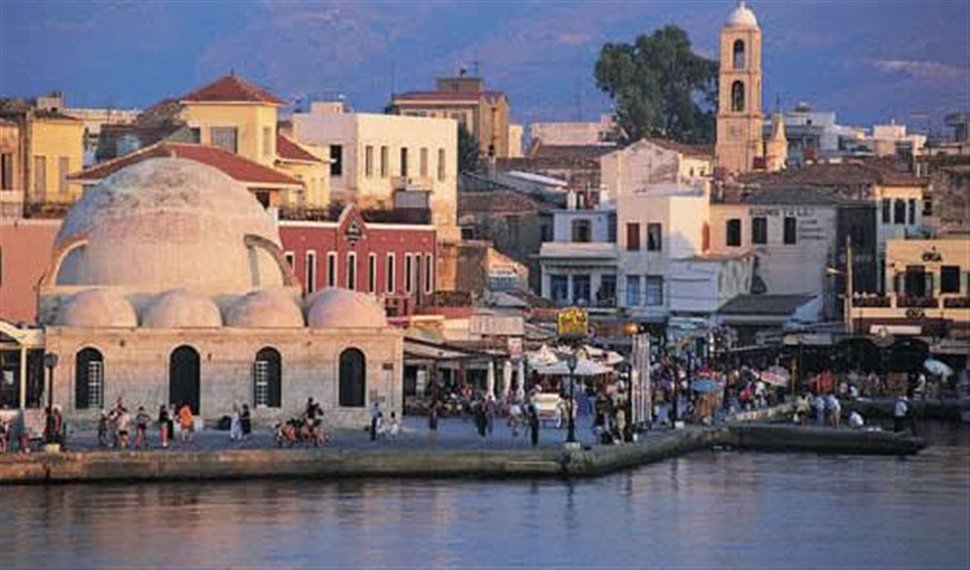Crete, the largest of the Greek islands, is a land of rich cultural heritage and diverse historical influences. Among the most significant periods in Cretan history is the Venetian rule, which lasted from 1204 to 1669. During this time, the Venetians left an indelible mark on the island, most notably through their architectural contributions. Venetian architecture in Crete blends functionality with elegance, creating a unique legacy that continues to shape the island’s aesthetic and cultural identity.
Historical Context: The Venetian Occupation
The Fourth Crusade led to the fragmentation of the Byzantine Empire, and in 1204, Crete was sold to the Republic of Venice. The Venetians saw Crete as a valuable asset for their maritime empire, using the island as a crucial base for trade and military operations in the Eastern Mediterranean.
Strategic Importance
Crete’s strategic location made it an ideal point of control for Venetian sea routes. The Venetians fortified key cities and built extensive defenses to protect against potential invasions by pirates and rival powers such as the Ottoman Empire.
- Military Fortifications: The construction of fortresses and walls was a priority for the Venetians. These fortifications not only served military purposes but also projected Venetian power and influence.
Architectural Innovations and Legacy
Venetian architecture in Crete is characterized by its blend of Gothic, Renaissance, and local styles. The architecture from this period includes public buildings, private residences, religious structures, and fortifications, all of which exhibit a unique fusion of Venetian and Cretan elements.
Fortifications and Defensive Structures
One of the most notable aspects of Venetian architectural influence in Crete is the extensive network of fortifications.
- The Fortress of Koules: Located in Heraklion, Koules Fortress (also known as Castello a Mare) is one of the most iconic Venetian structures. Built in the early 16th century, it served as a defensive stronghold to protect the harbor from pirate attacks. Its massive stone walls, battlements, and strategic placement at the entrance of the harbor highlight Venetian military architecture.
- The Walls of Chania and Rethymno: Both Chania and Rethymno feature impressive Venetian walls and fortifications. These walls were designed to withstand sieges and cannon fire, reflecting the advanced military engineering of the Venetians. The Fortezza of Rethymno, with its star-shaped design, is a prime example of Renaissance military architecture.
Public Buildings and Urban Planning
The Venetians also made significant contributions to the urban landscape of Crete, designing public buildings and implementing urban planning concepts that reshaped Cretan cities.
- Loggia of Heraklion: The Venetian Loggia in Heraklion, built in the early 17th century, served as a meeting place for the nobility and an administrative center. Its elegant arches, columns, and open courtyard are characteristic of Venetian Renaissance architecture.
- Fountains and Public Squares: The Venetians introduced decorative fountains and spacious public squares, which became focal points of urban life. The Morosini Fountain in Heraklion, adorned with intricate carvings and topped with a lion statue, is a notable example.
Religious Structures
Venetian rule saw the construction and renovation of numerous religious buildings, many of which still stand today.
- Cathedral of St. Minas: In Heraklion, the Cathedral of St. Minas reflects a blend of Venetian and Byzantine architectural elements. The church’s grand facade, with its arched windows and detailed stonework, showcases Venetian influence.
- Church of San Salvatore: Located in Chania, this church was originally built by the Venetians and later converted into a mosque during Ottoman rule. Its architectural features, including the bell tower and intricate stone carvings, highlight the Venetian impact on religious architecture.
Private Residences and Palazzi
Venetian influence extended to private residences, with many noble families constructing grand palazzi that incorporated Venetian design principles.
- Palazzo dei Priuli: In Chania, the Palazzo dei Priuli is an example of a Venetian mansion that has been preserved. Its large windows, ornate balconies, and spacious courtyards are characteristic of Venetian residential architecture.
Cultural and Artistic Legacy
Venetian architecture in Crete did more than shape the island’s physical landscape; it also influenced its cultural and artistic development.
Artistic Fusion
The integration of Venetian and Cretan styles led to a unique artistic fusion, evident in the decorative arts, painting, and sculpture.
- Icon Painting: Cretan iconography from this period shows Venetian influences, with a blend of Byzantine and Renaissance elements. Artists like El Greco, who was born in Crete, were influenced by this cultural amalgamation before making their mark in Europe.
- Decorative Arts: Venetian motifs and techniques found their way into local craftsmanship, including pottery, wood carving, and metalwork.
Influence on Modern Architecture
The legacy of Venetian architecture continues to influence modern architectural practices in Crete. Many contemporary buildings incorporate elements of Venetian design, maintaining the island’s historical continuity and aesthetic appeal.
- Restoration Projects: Efforts to restore and preserve Venetian buildings ensure that this architectural heritage remains a vibrant part of Crete’s cultural landscape. Restoration projects often highlight the craftsmanship and artistic detail that characterize Venetian architecture.
Conclusion
The influence of Venetian architecture in Crete is a testament to the island’s rich and multifaceted history. The blend of Gothic, Renaissance, and local styles created a unique architectural legacy that continues to define the urban and cultural landscape of Crete. From the imposing fortresses and elegant public buildings to the grand palazzi and intricate religious structures, Venetian architecture has left an indelible mark on the island. Exploring these architectural treasures offers a window into Crete’s past, revealing the enduring impact of Venetian rule and the island’s ability to adapt and integrate diverse influences into its cultural fabric. As Crete moves forward, the preservation and appreciation of its Venetian architectural heritage remain vital, ensuring that this beautiful chapter of its history continues to inspire and captivate future generations.


